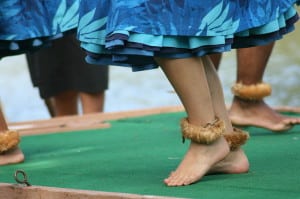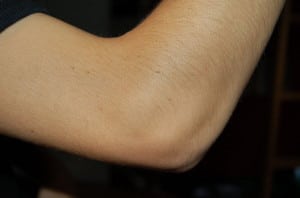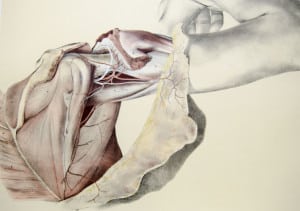
Trigger points can be many things depending on the context in which this term is used. In general, a trigger point is a situation or area that causes something or some event to occur. Something can trigger another thing or cause an event such as pain to begin. Sometimes, the pain occurs at a place that is different from where the trigger point is. This is exactly the case with particular reference to medical situations and the area of physiology. In these areas, trigger points refer to areas of sensitivity in the body such as tender, knotted and sore muscle areas that could trigger pain when touched, moved or activated in some way. The trigger points could also act as a stimulant for other events and may be a source of irritation or constant worry when planning to engage in an activity including sporting activities that may unknowingly activate the trigger point.
There are common pains that are caused by trigger points and these types of pains can be everyday muscle pains which people commonly have but do not know that such pains are associated with specific triggers. There are links between the muscles and the number of human pain complaints that occur with about 85 percent of human complaints being attributed to the skeletal muscles [1]. There can also be major trigger point areas which frequently become compromised and trigger pain. These areas include the soleus which originates from the knee towards the posterior surface of the tibia and posterior fibula, the illitibial or IT band which is a tendon that can be found along the side of the leg, the quadriceps or more specifically one of the quadriceps which is known as the vastus lateralis muscle, the psoas or the illopsoas, the pectorals and the piriformis [2]. The following are 6 common pains that are caused by trigger points.
#1 – Pain involving the head and upper body.
People may experience pain in the head and upper body region. However, the cause of such pain may actually be from a different part of the body and more likely to be the trigger point for the pain. The neck can affect many areas around it. Hence, any other kind of injury affecting the neck could have radiating or referral consequences in terms of pain that appears in another area of the body. Pain affecting the head can include frontal headache, back-of-head pain, vertex pain, temporal headache, frontal headache, toothache, back-of-neck pain, throat pain, cheek and jaw pain and eye pain [3].
All these pains may be caused by trigger points. Muscles in the neck can refer pain to the head and when these trigger points exist, the headaches and other types of related head pain could be quite severe and possibly severe enough to ruin a person’s day or seem like an emergency event. The time needed to refer a pain is also usually very small. The pain could be felt almost simultaneously as the trigger point is activated. Thus, there could be no time to react or connect the dots between the location of the pain and the trigger point.
However, a person may notice that head-related pain occurs when a certain activity begins such as climbing steps, jogging or moving the neck quickly. This can be a good way of diagnosing referral pain by indicating that an area in the body is affected by the current movement and is responsible for the resulting pain. It can be frustrating, though, due to the seemingly unconnected regions. Also frustrating about trigger points is that this area would not ordinarily exhibit any pain but only does so when touched or moved. On the contrary, involuntary movement of the trigger point swiftly moves the pain to the head region.
#2 – Foot pain.
When foot pain exists, a main trigger point is the calves of the legs and this could be a very tiny knot in the calf muscles. The challenging and mysterious issue with trigger points is that these areas could be experiencing active pain. However, a person may not realize this until that part of the body such as the calf is touched. Hence, until the trigger point releases or allows blood to begin to flow normally through it, a person may continue to feel pain at another location. Thus, if your foot hurts and you do not know why, consider if your calves are also acting as a trigger point. To get the blood to begin to flow more freely, a massage is usually a good treatment. However, the massage should target the calves of the legs and not the feet where pain is being felt.
#3 – Ankle pain.
For ankle pain, and similar to foot pain, the calf muscle may be responsible for such pain. Thus, you should also target the calf region for treatment. There may also be times that the little knots or trigger points have contracted so tightly that these areas have forgotten how to relax [4]. Hence, if you have ankles that are painful or feel weak, you may have overlooked a specific source of this pain. This may also be the reason why the particular pain that is being experienced never seems to dissipate or cease. The pain usually only vanishes when the trigger point has been released through treatment or if the knotted muscles suddenly or gradually begin to release without treatment. Sometimes, these knotted muscles and fibres at the trigger location contract and release without any apparent pattern. The heel may also be triggered by muscle knots similar to those that trigger pain in the ankles.
#4 – Elbow Pain.
Many different types of athletes or people may experience elbow pain, particularly athletes or people who participate in activities that affect the muscles around the elbow. People who use their arms a lot may continually feel pain at the elbow but wonder why the pain never seems to go away. Thus, there have been common terms such as golfer’s elbows or tennis elbows which refer to the tendency to experience pain in this part of the body during highly repetitive activities such as golf or playing tennis. Muscles in the arm including the extensor carpi radialis and the supinator can become trigger points for pain the in elbow or arm and this type of pain could be treated by using the knuckles of opposite arm’s fist to massage the arm muscles.
#5 – Knee pain.
Trigger points for pain in the knee can include the quadriceps. The quadriceps connects the top portion of the pelvis and tilts the pelvis forward while shifting back the buttocks. The quadriceps or rectus femoris has been associated with referral knee pain. There can also be trigger points in the thigh and hips. However, during treatment for trigger point problems, massage therapists may first seek any associated trigger points that relate to the rectus femoris and such triggers may be situated just above the knee. Thus, when people who are experiencing knee or any other type of referral pain try to massage the actual area where pain is being felt, they may get no relief because the trigger for the pain is elsewhere. Hence, locate the trigger and ease the pain. Sometimes, the pains that are initially thought to be associated with ligaments around the knee are actually trigger point referral pain.
#6 – Shoulder and Arm Pain.
This may be caused by trigger points in the neck. There are muscles in the neck including the supraspinatus, scalene and infraspinatus that could get bruised or become sore and these muscles then trigger pain. When the muscles around the arm or shoulder experience palpitation or some significant movement, it can channel the sensation of pain. Pain that could occur in the shoulder and arm area include back-of-shoulder pain, front-of-shoulder pain, upper thoracic back pain, mid-thoracic back pain, front-of-arm pain and back-of-arm pain and there are also various trigger points that could be associated with each of these painful areas [5].
While trigger points may exist in one part of the body, the pain that could be triggered by these trigger points could occur elsewhere in the body. The trigger points could also be painful when touched or moved. However, ordinarily, these trigger points may exist quietly and not provide any indication of existence. Due to the referral nature of the occurring pain, it can then be quite difficult to identify the trigger point unless you understand where such triggers may be. However, this is a key step in finding relief from trigger point pain. There are different ways to ease pain caused by trigger points including massages and using the hands, elbows, knees and feet as massage tools or by using an appropriate massage ball to create firmer connectivity between the aching muscles and the other surface which could be a hand or a wall.
If you want to learn more about how to deal with these common pains and their triggers then check out Trigger Point Solution here:
Rick Kaselj, MS
.





